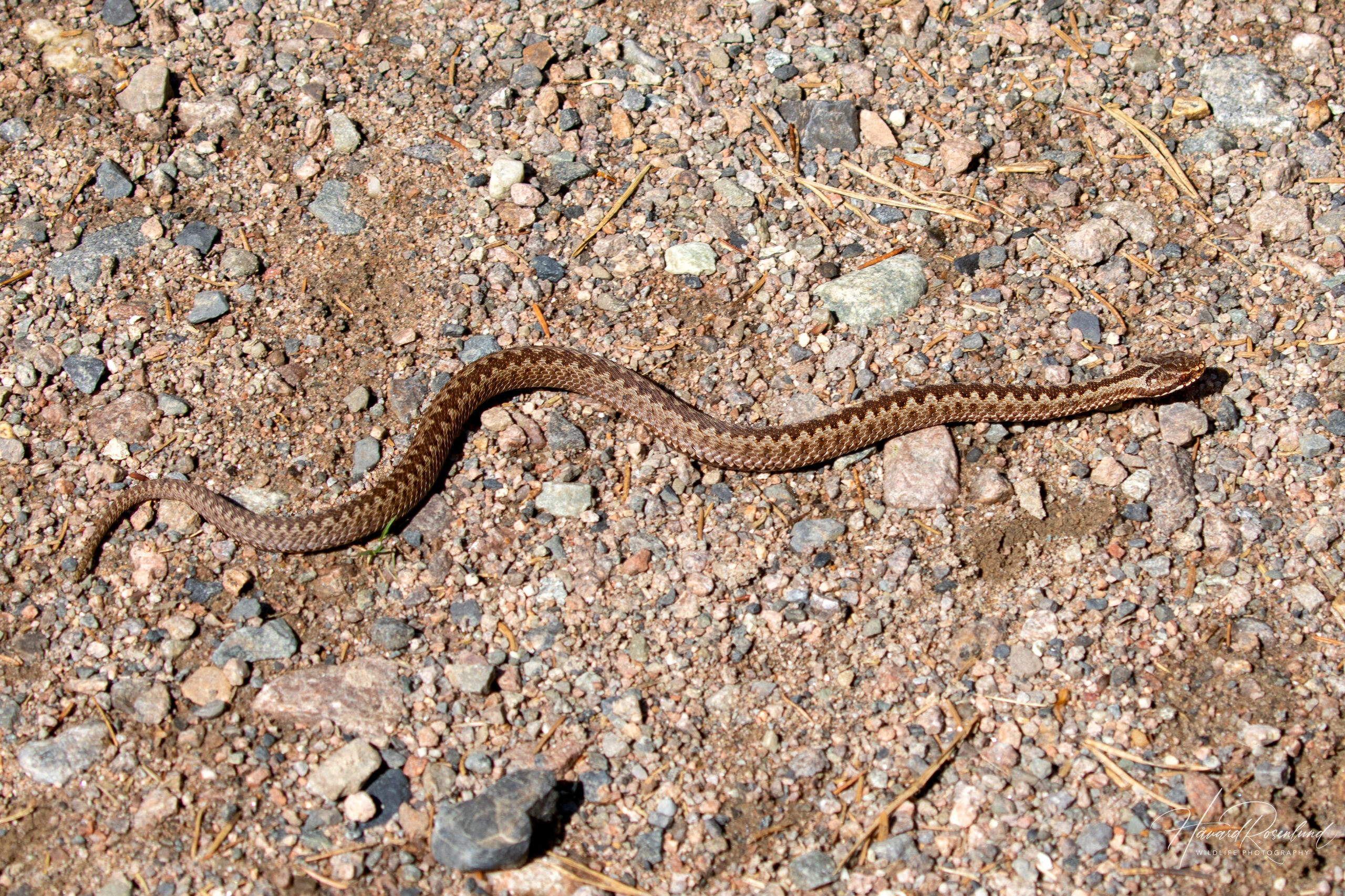Description
The adder (Vipera berus), also known as common adder and European viper, is the only venomous snake native to Northern Europe and Britain. It is found across the Eurasian landmass, extending its range from Western Europe to East Asia. This snake is characterized by its distinctive zig-zag pattern along its back, set against a background color that can vary from grey to reddish-brown (some individuals can be entirely black). Adults typically grow to a length of 60-90 cm (24-35 inches), making them relatively small compared to some other snakes. Key features distinguishing the adder from other snake species, such as the grass snake (Natrix natrix), is its V-shaped head and the dark zig-zag pattern along its back.
Diet & habitat
The adder occupies a variety of habitats, including heathland, moorland, woodlands, and sometimes more urban areas. It prefers areas with a mix of cover and open spaces for basking. Its diet predominantly consists of small mammals, such as voles and mice, but it will also consume lizards, birds, and amphibians. The adder employs an ambush strategy, lying in wait for unsuspecting prey to come within striking distance.
Behavior & venom
Adders are solitary snakes, exhibiting social behavior primarily during the breeding season. They hibernate during the winter months and are most active from April to September. The adder’s venom contains neurotoxins and hemotoxins, which can cause swelling, pain, and, in rare cases, more severe reactions in humans. However, fatalities are extremely rare, and the snake is generally shy, preferring to flee rather than engage.
Reproduction
Breeding occurs in spring, following their emergence from hibernation. Males engage in “dance-like” combat for access to females. Females give birth to live young, typically between August and October, with litters ranging from 3 to 20. Young adders are fully independent from birth. Adders reach sexual maturity in their third year and can live up to 15 years in the wild.
Status
The adder is classified as least concern on the IUCN Red List, but its populations are believed to be declining in some areas due to habitat loss, fragmentation, and persecution. Conservation efforts focus on habitat preservation and public education to reduce negative interactions. In some countries, like the United Kingdom and Norway, it is illegal to kill, harm or sell adders.






